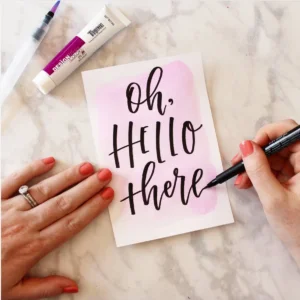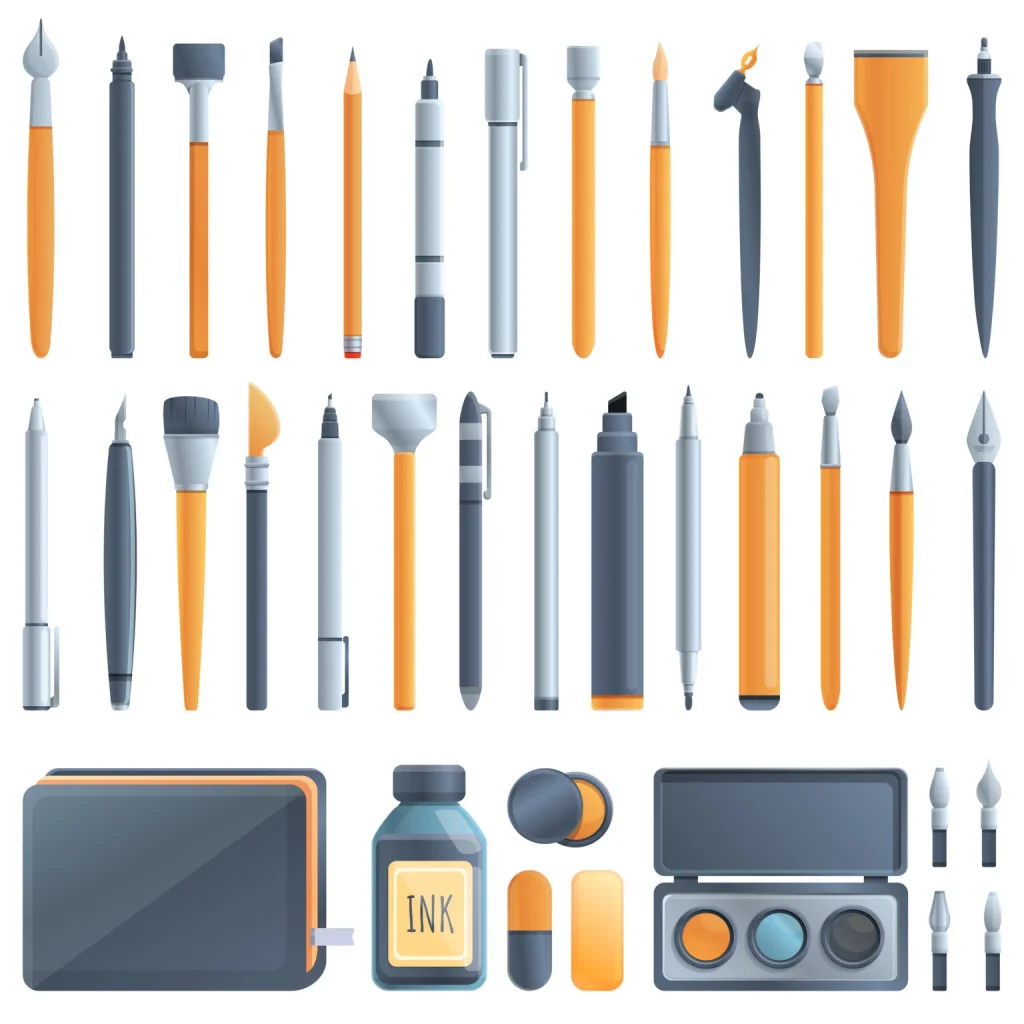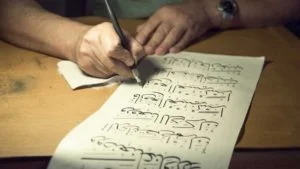When most people hear the word “calligraphy,” they probably think of copperplate calligraphy.
Calligraphy accentuates the beauty and history of the written word by allowing you to see each word and phrase, similar to how a painting allows you to put words to the tale displayed. Handwriting and calligraphy are no longer taught in primary schools as they were when we (and our parents) were children.
The truth is that handwriting and calligraphy are still important because, as humans, we have been writing for as long as we can remember, and the act of writing, whether calligraphy or handwriting, provides numerous benefits.
In this article, Podium brings to you the fundamentals of the Copperplate Calligraphy for you to begin with!
What Is Copperplate Calligraphy?
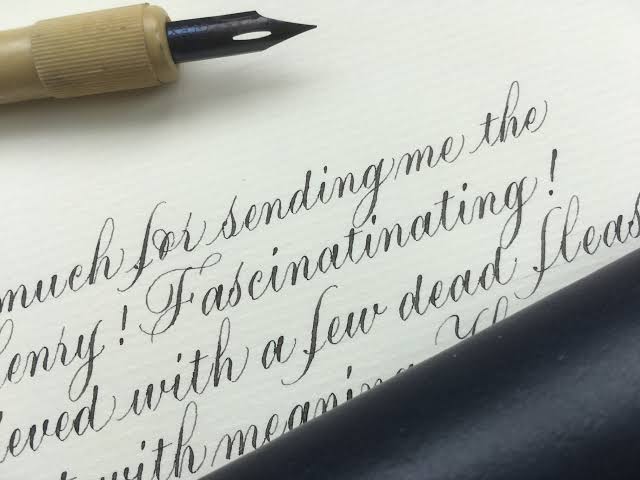
Copperplate derives its name from the fact that several of the classic script styles that fall under it were in to etch copper plates for mass book printing. It’s simple to see how it got a catchall name because the style has so many variations. The decorative usage of copperplate calligraphy is quite popular. Its style, which includes embellishments and intricate forms, has wide replication, although many people are unaware of its origins.
Roundhand Script, created by John Ayres and William Banson, is one of the more well-known original forms it was based on. Because they were constrained by the writing equipment available at the time, the style follows a thin and thick upstroke that is frequently done with pointed nibs or quills.
Copperplate calligraphy can now refer to any of the scripts used to engrave the copperplates. The present copperplate style has grown around more modern tools, while the earliest copperplate scripts, or roundhand script and its derivatives, were based on quills.
Calligraphers have evolved their own styles based on the usage of nibs, rather than the quill.
Of course, these are still pointed nibs. But the primary difference is that the bend of the nibs is taken into account. When the tines of a nib spread due to pressure applied to them, this is referred to as flex. As previously stated, this results in the thick and thin line variations that make up Copperplate calligraphy’s unique style.
What Copperplate Calligraphy Tools Do You Need?
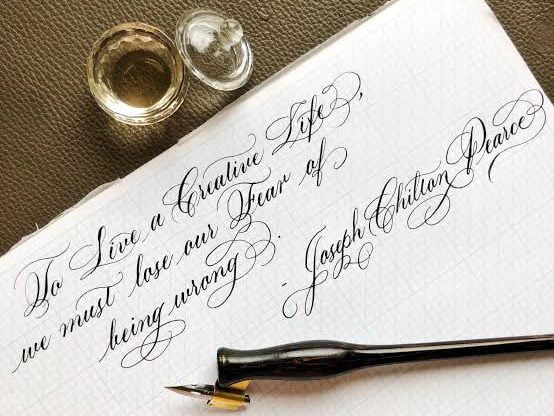
Let’s take a brief look at the tools we’ll need to practise the Copperplate Calligraphy.
Oblique Pen Holder
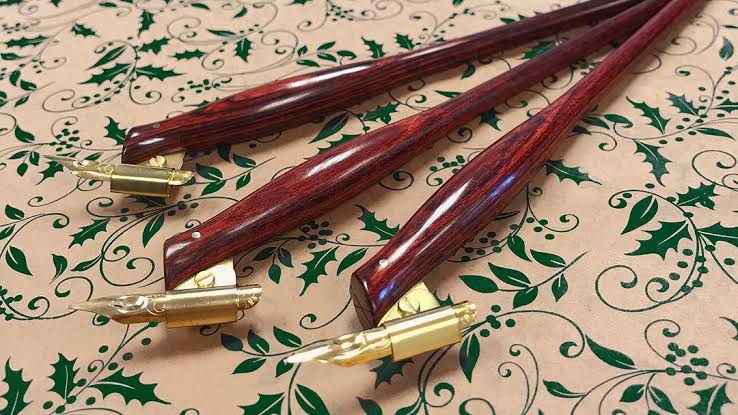
When working with a script that has a slant, such as Copperplate, we should use an oblique pen holder. An oblique pen holder makes writing letters at a 55-degree slant considerably easier without placing extra strain on the wrist or holding the paper at a drastically different angle.
A Nib That Is Suitable For Beginners
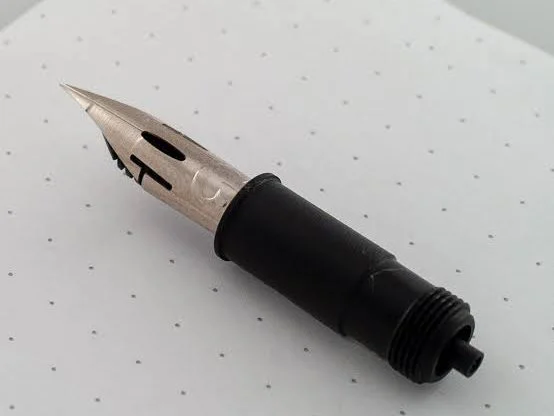
Only the pressure sensitive tines of a calligraphy nib can create the stunning contrast of thick and thin strokes, so it’s crucial to have one.
The Zebra G Nib is ideal for beginners because its pressure sensitivity is modest. So you don’t need to apply highly precise pressure to make letters.
Bleed Proof Paper
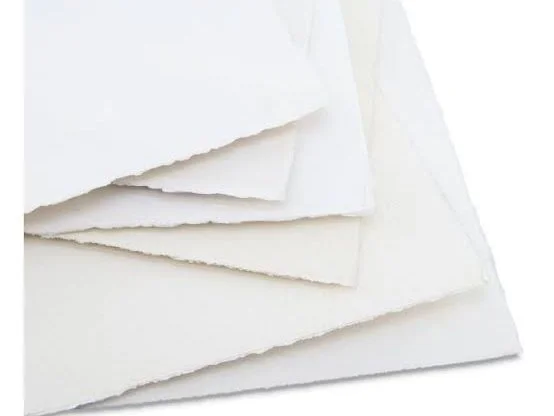
Practice paper can be any low-absorbent art paper that will not cause the ink to bleed.
Some recommendations are:
- Strathmore (Patchment)
- Saunders Waterford (Watercolor – Smooth surface)
- HP premium 32 is a less expensive (for practise) option.
Ink For Calligraphy
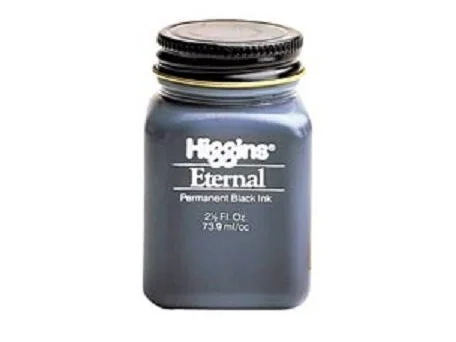
Most calligraphy inks should suffice in this situation.
Some recommendations are:
- Higgins Eternal,
- McCaffery’s Penman Ink
- Speedball Super Black
We’ll need other materials in addition to these specialist instruments, such as –
- Rolling ruler – for swiftly drawing guidelines and parallel lines.
- A pencil
- And an eraser
The Fundamental Strokes And Guidelines For Writing

- The primary rule of Copperplate is to write with the nib at the same angle as the letter.This is why the oblique holder is more convenient to use.
- To make your writing even smoother and more relaxing, twist the page so that your nib points in the direction of the slant lines — it’s best to turn the paper than it is to turn your wrist.
- Copperplate’s general rule is to draw thin upstrokes without pushing the pen and thick downstrokes pressing the pen.
Basic strokes are essential for understanding letter concepts.
- The letters of the alphabet are divided into groups. Each letter in a group has a similar shape and is frequently has the same fundamental stroke.
- Copperplate Script’s lower case letter has seven fundamental strokes. With the exception of the letters r, s, x, and z (these letters belong to a select group which contains particular strokes) mastering these 7 basic strokes allows you to write nearly every lowercase letter in the alphabet.
Copperplate lowercase letters, on the other hand, have beginning and ending strokes. It’s critical to master these fundamental strokes because they’ll serve as the foundation for further improvement.
How Long Does It Take to Master Copperplate Calligraphy?
Copperplate learning is dependent on the student. The strokes, angles, and general control of the pen are the foundations of Copperplate. While the fundamentals of Copperplate calligraphy can be learned quickly, perfecting the craft is a different storey. The fundamentals are actually quite simple to obtain.
The difficult part is perfecting copperplate calligraphy. To get it right, you’ll need a lot of practise. To successfully execute each script, the muscles in your hand must establish muscle memory for it. It goes without saying that all of this will take time. It could take years or months for a professional calligrapher to have enough competence to perform it professionally. Just remember to have a good time while doing it.
Final Thoughts
Copperplate calligraphy is a broad term that refers to a variety of styles based on the thick and thin line variants of the Roundhand technique. With the passage of time and the tools available, copperplate styles evolved further.
While Copperplate is a general word for the overall style, you can master a variety of scripts and styles to create many copperplate scripts. That’s why a fast search of calligraphy fonts on Google will turn up a plethora of designs that could be classified as copperplate but aren’t exactly the same as modern copperplate.
In life, it is critical to learn as many talents as possible. Calligraphy boosts a person’s creativity and aids in their personal development. Podium School provides calligraphy classes in which you can enrol and learn more about calligraphy to acquire this talent!
For more updates, keep checking our blog and don’t forget to read our latest archive on Online Educational Games to Make Learning Fun for Kids!
Share with your friends

